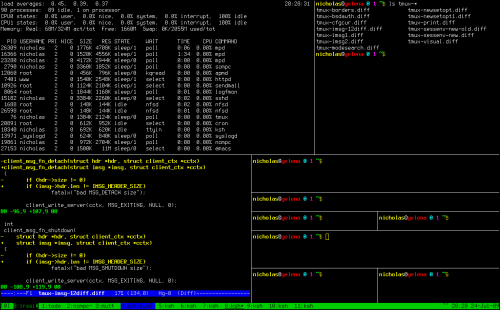- I'm at Sigma Bakery (4, Makariou III St, Limassol) http://t.co/RJk9Hpg #
- I just ousted @alfavoro as the mayor of Sigma Bakery on @foursquare! http://t.co/Poq39rk #
- Shared: Using Gmail, Calendar and Docs without an Internet connection http://t.co/XNM8zWA #
- Screwed Up on Vimeo http://t.co/6HBLqUH #
- Shared: Unlimited free internet access in Yeroskipou http://t.co/fVI1Ege #
- Shared: Kamil Páral: Git Tip of the Day – The Ultimate Tip http://t.co/V5gPyOG #
- I favorited a @YouTube video http://t.co/Cp0jeSB As Seen on TV – a tribute to doing it wrong #
- @cergatides Here is a short URL for it: http://t.co/JgyZ3cq #
- #Cyprus Pharmacies Guide for iPhone, iPod touch, and iPad on the iTunes App Store http://t.co/vE2zKvF #
- This is awesome! Being John Malkovich – ECCV 2010 on Vimeo http://t.co/ORvkD3n #
- Not for business (@ The Ship Inn) http://t.co/ih71Rde #
Year: 2011
Coming to America
I came across this video via Kottke.org . A group of young men from Sudan travel to the United States. The video shows just a few of the many cultural and technologies differences between these two countries. Truly fascinating!
[youtube=http://www.youtube.com/watch?v=BT0kzF4A-WQ]
Why you should teach yourself WordPress taxonomies
Alex King has a blog post describing the major differences between using custom fields and taxonomies in WordPress. If you are familiar with the WordPress database, and if you think about it for a couple of minutes, you’ll probably realize why taxonomies are a better choice than custom fields for those situations where you can use both.
The reason to favor a custom taxonomy in these situations has to do with the WordPress database structure. Queries by taxonomy are well optimized as this is a primary front-end presentation feature in WordPress core. Conversely, querying by custom field key and value is slow. The value column in the custom field table is not indexed – you are basically doing a search through data that is not intended for that purpose.
The problem is that too many people, even those who are very well familiar with WordPress database structure, never really think about it. And since custom fields are an older way of solving problems, many go for them without proper consideration.
Day in brief – 2011-08-31
- G+: Twitter limits that you don't necessarily know. http://t.co/ZHvlkCT #
- G+: For those of you crazy about todo lists, check this tool out. http://t.co/o5XffBK #
- Fixing mirror. Take two. (@ E.F.I. Technics Garage) http://t.co/wbQE5fH #
- I just became the mayor of E.F.I. Technics Garage on @foursquare! http://t.co/Az6eE0A #
- G+: Albert Einstein street in Limassol, Cyprus. http://t.co/Un2P17H #
- Shared: Google +1 Extension for Chrome http://t.co/80HBigs #
- Shared: Now say goodbye to the 60-watt bulb http://t.co/e7j9kww #
- Shared: Limassol Wine Festival 2011 http://t.co/AduCth6 #
- I favorited a @YouTube video http://t.co/zU2G9g8 AI vs. AI. Two chatbots talking to each other #
- Shared: Some Alternative (and Funny) Lorem Ipsum Generators http://t.co/q0bPHb7 #
- Business meeting, for once. (@ The Ship Inn) http://t.co/RhBgs2r #
- Need more of thay awesome shisha (@ Estilo Tapas Bar) http://t.co/dm3jKiI #
- I just became the mayor of Estilo Tapas Bar on @foursquare! http://t.co/3PzDw1a #
tmux – Linux terminal multiplexer
I stumbled upon a very useful tool – tmux. It is a terminal multiplexer for Linux. If you are using Terminator or screen, you’d want to check it out. If you don’t use either of those, you definitely need to check it out.
With tmux, you can have a single shell in which you can create multiple sessions. You can split each session into a number of windows. You can detach from tmux and all your sessions and windows will remain open and running, much like with screen. Later you can attach back to them again or you can start a totally new instance. The interface is keyboard driven. It is simple and intuitive, but as with any other tool, you’ll need a bit of time to get used to it.
If you are a Fedora Linux user, all you have to do to try it out is: ‘yum install tmux‘. If you can read Russian, here is a quick introduction to most useful shortcuts. Check the official website for the rest of the documentation.
